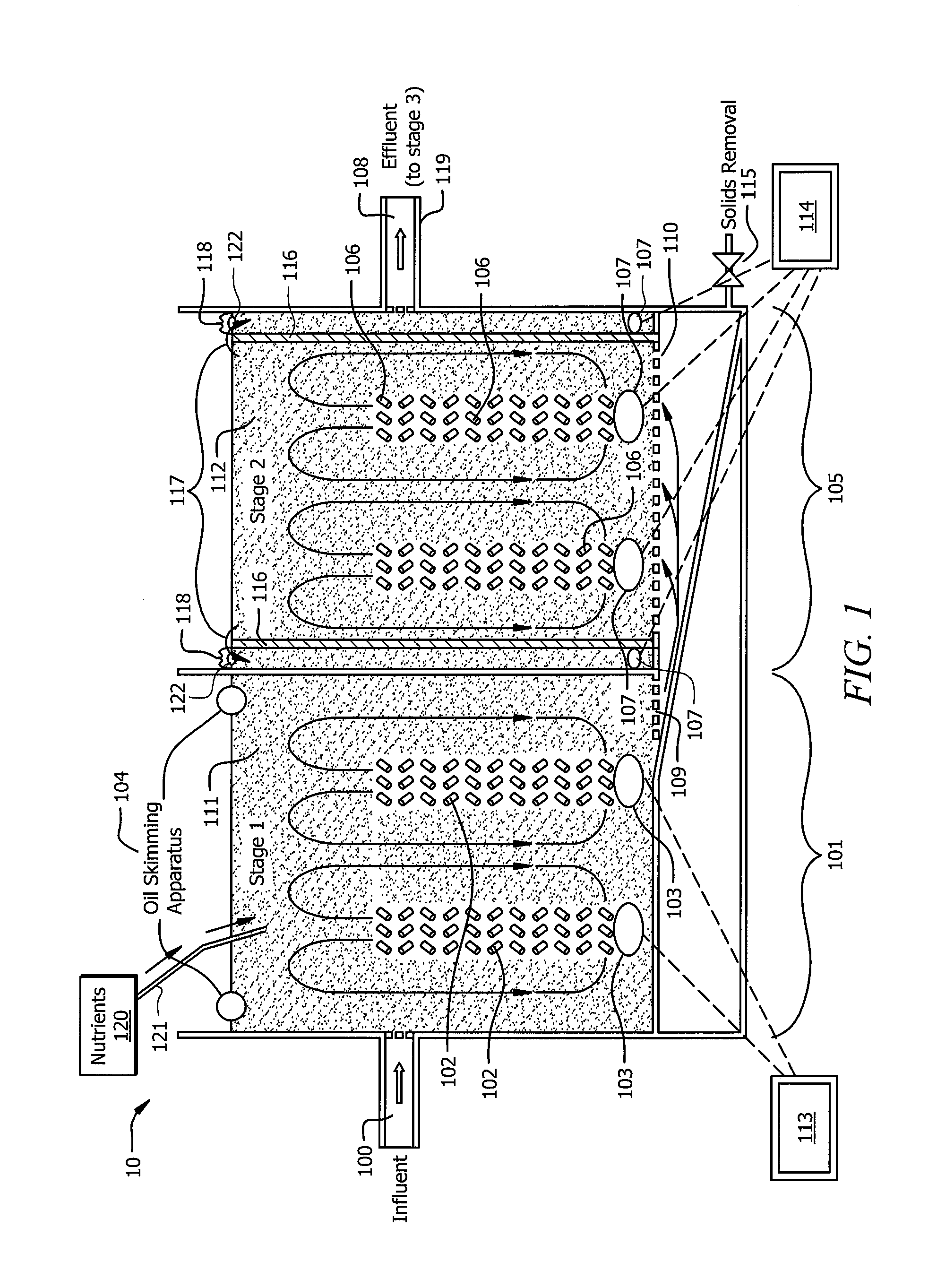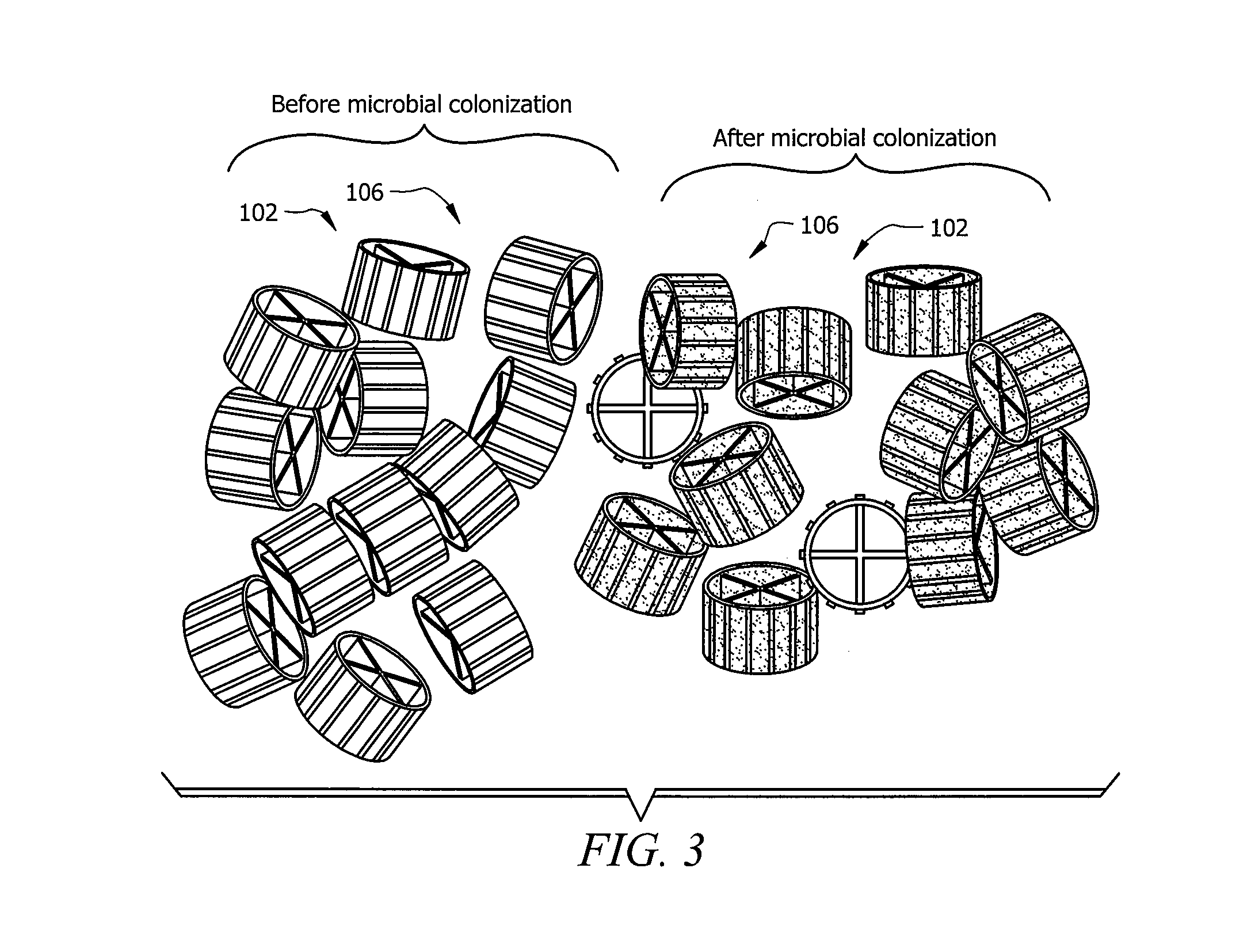Water treatment systems and methods for concurrent removal of various types of organic materials
a technology of water treatment system and organic material, applied in the field of water treatment, can solve the problems of water discharged from those operations often having to meet stringent environmental standards, oil and other organic materials may contaminate, and water treatment system
- Summary
- Abstract
- Description
- Claims
- Application Information
AI Technical Summary
Benefits of technology
Problems solved by technology
Method used
Image
Examples
Embodiment Construction
[0014]FIG. 1 shows water treatment system 10 for treating water, such as wastewater, according to embodiments of the invention. Wastewater may include water contaminated by materials such as petroleum hydrocarbons, oilfield chemicals, various types of salts, suspended solids etc. Water treatment system 10 treats water to simultaneously remove aqueous phase organic materials, non-aqueous phase liquid organic materials and volatile phase organic materials. FIG. 2 shows water treatment method 20, according to embodiments of the invention. Water treatment system 10 may be used to implement water treatment method 20 according to embodiments of the invention to treat water to meet one or more standards (e.g. environmental standards) established by a standards organization, government entity, company, etc.). Water treatment method 20 may begin, at block 200, with water treatment system 10 receiving influent 100 in gas floatation bioreactor vessel 101. Influent 100 may be a contaminated wat...
PUM
| Property | Measurement | Unit |
|---|---|---|
| height | aaaaa | aaaaa |
| organic | aaaaa | aaaaa |
| volatile | aaaaa | aaaaa |
Abstract
Description
Claims
Application Information
 Login to View More
Login to View More - R&D
- Intellectual Property
- Life Sciences
- Materials
- Tech Scout
- Unparalleled Data Quality
- Higher Quality Content
- 60% Fewer Hallucinations
Browse by: Latest US Patents, China's latest patents, Technical Efficacy Thesaurus, Application Domain, Technology Topic, Popular Technical Reports.
© 2025 PatSnap. All rights reserved.Legal|Privacy policy|Modern Slavery Act Transparency Statement|Sitemap|About US| Contact US: help@patsnap.com



